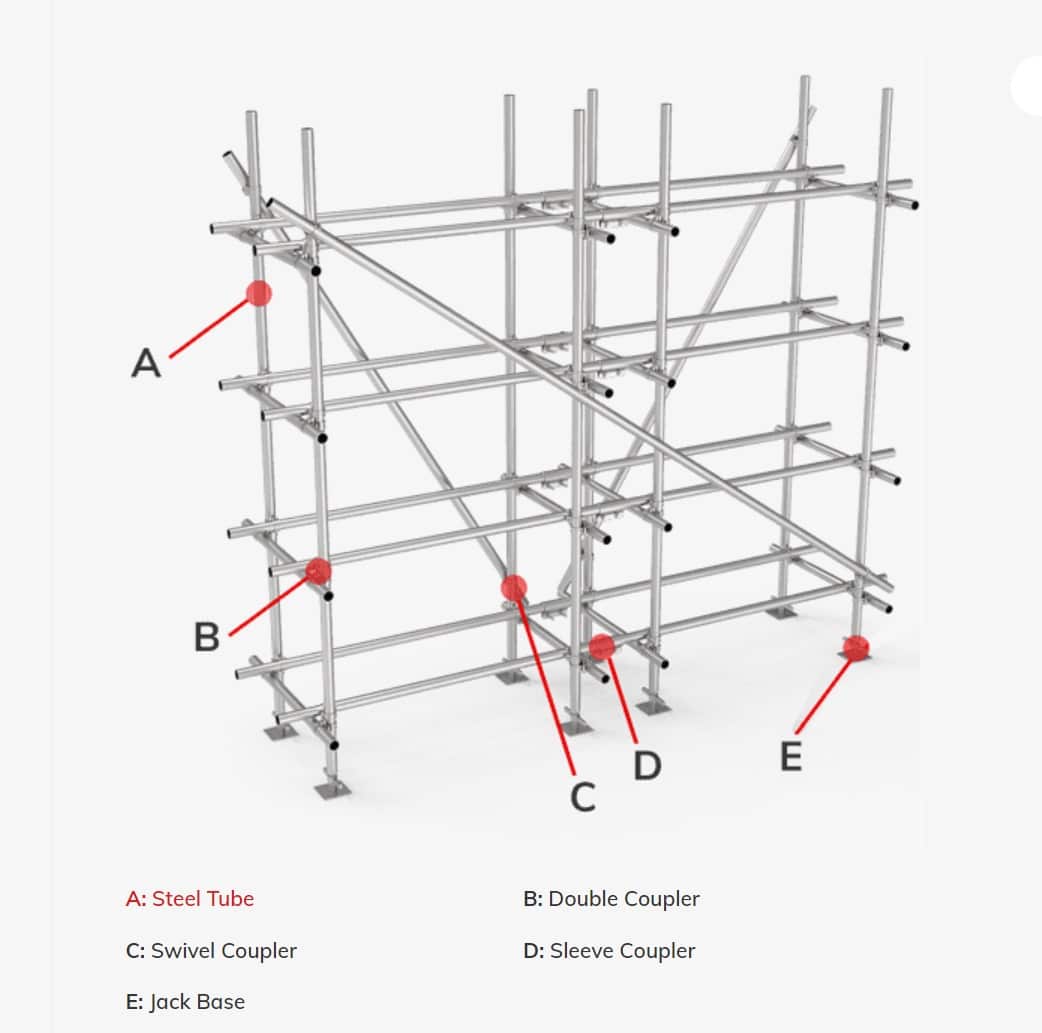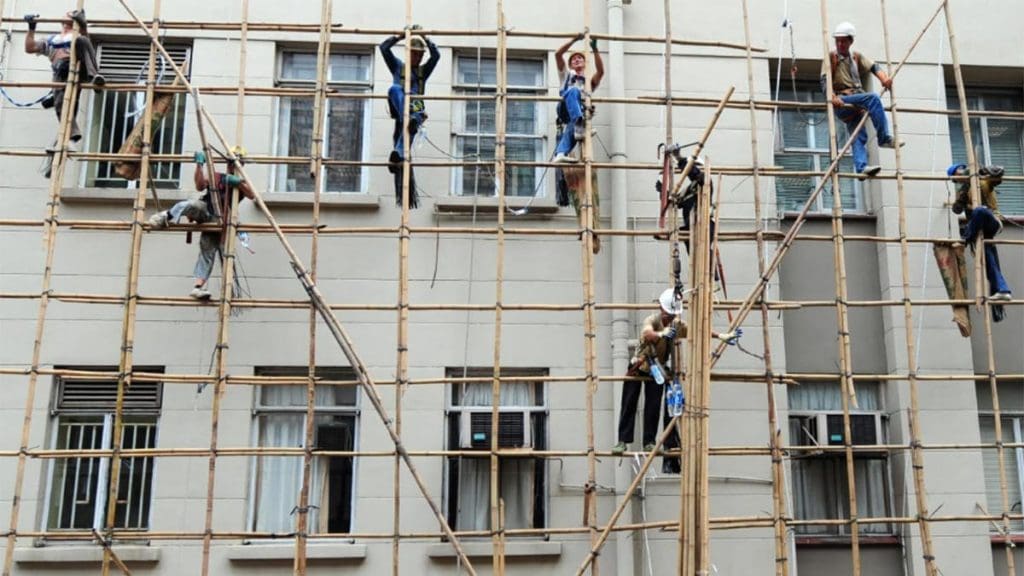Top-Notch Scaffolding Near Me: Expert Solutions for Every Job
Top-Notch Scaffolding Near Me: Expert Solutions for Every Job
Blog Article
Exploring the Different Sorts Of Scaffolding Utilized in Building Projects
The construction sector depends heavily on different kinds of scaffolding to satisfy details job demands, each offering unique benefits and applications. Typical frame scaffolding provides a durable foundation for general tasks, while suspended scaffolding is necessary for job on skyscraper frameworks.

Traditional Framework Scaffolding
Conventional frame scaffolding is among one of the most commonly used techniques in the construction sector as a result of its toughness and versatility. This system consists of straight and vertical frames that are assembled to develop a stable platform for employees and products. The primary parts consist of vertical blog posts, horizontal journals, and angled dental braces, which with each other give a strong structure that can sustain significant tons.
Among the key advantages of conventional frame scaffolding is its adaptability to numerous construction jobs, ranging from property buildings to big commercial structures. The modular style permits very easy assembly and disassembly, making it effective for both temporary and lasting tasks. Additionally, the system can be customized in elevation and width, fitting various building styles and site problems.
Safety and security is paramount in scaffolding applications, and conventional structure systems are geared up with guardrails and toe boards to stop drops and guarantee worker security. Routine inspections and adherence to safety guidelines are crucial in keeping the integrity of the scaffold (Scaffolding). In general, conventional framework scaffolding stays a basic selection in the construction industry, supplying a trustworthy platform for labor and enhancing overall task effectiveness

Suspended Scaffolding
Put on hold scaffolding offers a special remedy for construction projects that need accessibility to elevated surfaces, particularly in circumstances where standard structure scaffolding may be not practical. This kind of scaffolding is commonly suspended from the roofing or top degrees of a framework, utilizing a system of pulleys, ropes, and systems to create a functioning area that can be gotten used to various elevations.
Among the primary advantages of suspended scaffolding is its versatility. It can be quickly rearranged or lowered to accommodate changes in construction requirements, making it excellent for tasks such as window setup, frontage work, and maintenance on skyscraper buildings. Additionally, the very little footprint of suspended scaffolding enables much better use ground area in urban settings, where room is commonly limited.
Security is a crucial factor to consider in the usage of put on hold scaffolding. On the whole, put on hold scaffolding provides a effective and effective remedy for accessing hard-to-reach locations in numerous building scenarios, enhancing both performance and safety and security on site.
System Scaffolding
System scaffolding, usually concerned as a contemporary solution in the scaffolding market, includes pre-engineered components that can be swiftly set up and adjusted for different building and construction jobs. Scaffolding. This kind of scaffolding is identified by its modular style, which permits flexibility and performance on work websites, fitting different elevations and architectural needs
Normally made from high-strength steel or light weight aluminum, system scaffolding offers improved resilience and stability. The components include vertical blog posts, horizontal journals, and angled braces, which interconnect safely, making certain a durable structure. The layout typically incorporates standardized fittings, streamlining setting up and disassembly processes, consequently decreasing labor time and prices.

Rolling Scaffolding
Rolling scaffolding is a flexible option to typical set scaffolding, designed for mobility and convenience go to this website of use on building sites. This kind of scaffolding contains a platform sustained by frames with wheels, enabling workers to conveniently transfer it as needed. The flexibility function substantially boosts performance, as it lessens downtime related to disassembling and setting up dealt with scaffolding.
Usually constructed from lightweight materials such as aluminum or steel, rolling scaffolding uses a sturdy yet mobile solution for tasks requiring frequent repositioning - Scaffolding. It is specifically useful in jobs such as paint, drywall installment, and electric job, where access to various elevations and places is required
Safety and security is extremely important in rolling scaffolding design, with features such as locking wheels to prevent unplanned activity when in operation, and guardrails to protect employees from drops. In addition, numerous designs are adjustable in height, accommodating numerous job demands.
Cantilever Scaffolding

The design of cantilever scaffolding typically involves utilizing arms or brackets anchored to a building or structure, enabling the platform to prolong outside securely. Safety and security is vital; thus, these scaffolds need to be engineered to hold up against environmental problems and various tons. Regular evaluation and upkeep are vital to guarantee architectural honesty and employee safety and security.
Cantilever scaffolding is favored for its adaptability and reliable use room, making it a preferred choice in urban atmospheres where space constraints are typical. It assists in much easier accessibility to high altitudes, ultimately adding to the total effectiveness of building jobs. As with all scaffolding kinds, correct training and adherence to safety and security requirements are critical for workers utilizing cantilever scaffolding.
Verdict
To conclude, the diverse types of scaffolding used in building and construction jobs each serve distinctive Home Page functions customized to specific website requirements. Traditional structure scaffolding offers security, while put on hold scaffolding provides flexibility for raised jobs. System scaffolding assists in quick assembly, and rolling scaffolding improves flexibility for differing work settings. Cantilever scaffolding effectively deals with challenges in urban setups. Comprehending these scaffolding kinds is necessary for enhancing safety and productivity in building, ultimately contributing to the successful completion of projects.
Conventional structure scaffolding gives a durable foundation for general jobs, while suspended scaffolding example scaffolding is vital for work on skyscraper frameworks.Moving scaffolding is a flexible option to traditional fixed scaffolding, made for movement and convenience of use on building sites. As with all scaffolding types, proper training and adherence to safety standards are important for workers utilizing cantilever scaffolding.
Typical framework scaffolding offers security, while put on hold scaffolding provides convenience for raised tasks. System scaffolding promotes fast assembly, and rolling scaffolding enhances flexibility for differing work atmospheres.
Report this page